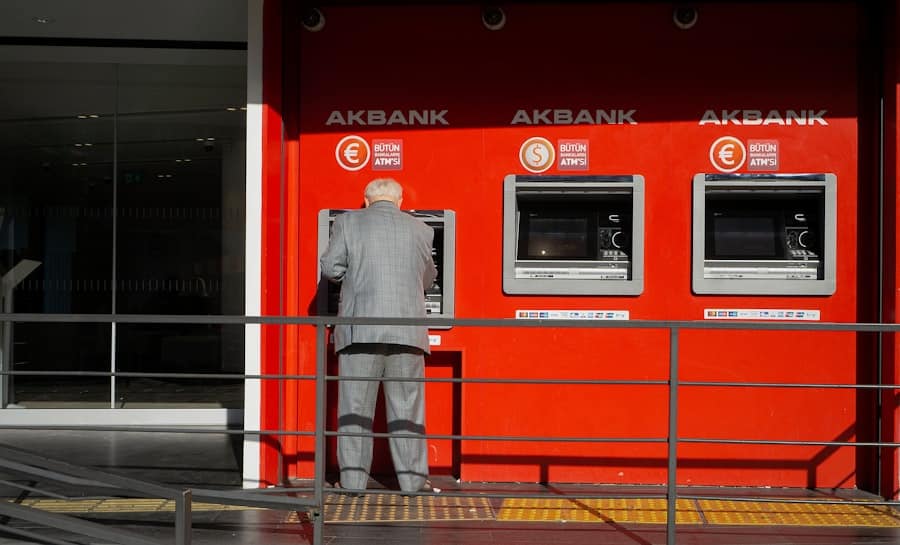The concept of the metaverse has rapidly evolved from a niche idea in science fiction to a burgeoning reality that encompasses virtual worlds, augmented experiences, and digital interactions. As this digital universe expands, it brings with it a plethora of opportunities for various sectors, including finance. Metaverse banking refers to the integration of traditional banking services within these immersive digital environments, allowing users to conduct financial transactions, manage assets, and engage in economic activities in a virtual space.
This new paradigm is not merely an extension of online banking; it represents a fundamental shift in how financial services are delivered and experienced. In the metaverse, users can interact with financial institutions through avatars, participate in virtual marketplaces, and utilize decentralized finance (DeFi) protocols. This immersive experience can enhance user engagement and accessibility, particularly for younger generations who are more accustomed to digital interactions.
As the metaverse continues to develop, financial institutions are beginning to explore how they can leverage this new landscape to offer innovative products and services that cater to the evolving needs of consumers. The intersection of finance and the metaverse is poised to redefine the banking experience, making it more interactive, personalized, and efficient.
Key Takeaways
- Metaverse banking represents a new frontier where financial services are integrated into virtual environments.
- Financial institutions play a crucial role in enabling secure and innovative banking experiences within the metaverse.
- Key challenges include security, privacy, and regulatory compliance, while opportunities lie in enhanced customer engagement and new financial products.
- Blockchain technology and NFTs are central to ensuring transparency, ownership, and trust in metaverse financial transactions.
- The future of metaverse banking promises transformative impacts on the financial industry, blending digital assets with traditional services.
The Role of Financial Institutions in the Metaverse
Financial institutions are increasingly recognizing the potential of the metaverse as a platform for delivering services and engaging with customers. Traditional banks and fintech companies are exploring ways to establish a presence in these virtual environments, offering services such as virtual banking branches, investment platforms, and payment solutions tailored for digital assets. By creating immersive experiences, these institutions can foster deeper connections with their clients, providing them with a sense of community and belonging that transcends geographical boundaries.
Moreover, financial institutions can utilize the metaverse to enhance their product offerings. For instance, they can create virtual investment seminars or workshops where users can learn about financial literacy in an engaging manner. Additionally, banks can facilitate peer-to-peer lending or crowdfunding initiatives within the metaverse, allowing users to invest in projects or businesses that resonate with them.
This not only democratizes access to capital but also encourages collaboration among users, fostering a sense of shared purpose and community investment.
Challenges and Opportunities in Metaverse Banking

While the metaverse presents numerous opportunities for financial institutions, it also poses significant challenges that must be addressed. One of the primary concerns is regulatory compliance. As the metaverse operates across various jurisdictions, financial institutions must navigate a complex web of regulations that govern digital assets, data privacy, and consumer protection.
Ensuring compliance while innovating within this space can be a daunting task for banks and fintech companies alike. Another challenge lies in the technological infrastructure required to support metaverse banking. Financial institutions must invest in robust systems that can handle high volumes of transactions in real-time while ensuring seamless integration with existing banking platforms.
Additionally, they must prioritize user experience by creating intuitive interfaces that cater to both tech-savvy users and those who may be less familiar with digital environments. Despite these challenges, the potential rewards are substantial. By embracing the metaverse, financial institutions can tap into new revenue streams, attract younger customers, and position themselves as leaders in an evolving digital landscape.
Security and Privacy Concerns in the Metaverse
As with any digital platform, security and privacy are paramount concerns in the realm of metaverse banking. The immersive nature of the metaverse introduces unique vulnerabilities that could be exploited by malicious actors. For instance, phishing attacks may become more sophisticated as users interact through avatars and virtual environments.
Financial institutions must implement robust security measures to protect user data and assets from potential breaches. Moreover, privacy concerns arise from the collection and use of personal data within the metaverse. Users may be unaware of how their information is being utilized or shared with third parties.
This includes providing users with control over their data and ensuring compliance with data protection regulations such as GDPR or CCPBy addressing these security and privacy concerns proactively, financial institutions can create a safer environment for users to engage in banking activities within the metaverse.
The Integration of Blockchain Technology in Metaverse Banking
Blockchain technology serves as a foundational element for many aspects of metaverse banking. Its decentralized nature allows for secure transactions without the need for intermediaries, which aligns perfectly with the ethos of the metaverse. Financial institutions can leverage blockchain to facilitate cross-border payments, streamline settlement processes, and enhance transparency in transactions.
By utilizing smart contracts, banks can automate various processes, reducing operational costs and improving efficiency. Additionally, blockchain enables the creation of digital identities that can be used within the metaverse. These identities can help verify user credentials while maintaining privacy and security.
Financial institutions can utilize these digital identities to streamline onboarding processes and enhance customer verification procedures.
The Impact of NFTs and Digital Assets in Metaverse Banking

Non-fungible tokens (NFTs) have emerged as a significant component of the metaverse economy, representing ownership of unique digital assets such as art, music, virtual real estate, and collectibles. Financial institutions are beginning to explore how they can incorporate NFTs into their offerings, providing users with new ways to invest and manage their digital assets. For example, banks could offer NFT-backed loans or create investment funds that focus on high-value NFTs.
Furthermore, digital assets are becoming increasingly mainstream as more individuals seek to diversify their portfolios beyond traditional investments. Financial institutions can play a crucial role in facilitating access to these assets by providing secure storage solutions and trading platforms tailored for NFTs and cryptocurrencies. By embracing this trend, banks can position themselves as trusted custodians of digital wealth while catering to a growing demographic interested in alternative investments.
The Future of Metaverse Banking and Financial Services
The future of metaverse banking is poised for significant transformation as technology continues to advance and user expectations evolve. As virtual reality (VR) and augmented reality (AR) technologies become more accessible, financial institutions will likely develop increasingly immersive experiences that allow users to engage with their finances in novel ways. Imagine walking into a virtual bank branch where you can interact with financial advisors through lifelike avatars or attending investment seminars hosted by industry experts in a fully immersive environment.
Moreover, as decentralized finance (DeFi) gains traction within the metaverse, traditional financial institutions may need to adapt their business models to remain competitive. This could involve forming partnerships with DeFi platforms or developing hybrid solutions that combine traditional banking services with decentralized protocols. The ability to offer seamless access to both traditional and digital financial services will be crucial for banks looking to thrive in this new landscape.
The Potential of Metaverse Banking for the Financial Industry
The emergence of metaverse banking represents a paradigm shift for the financial industry, offering unprecedented opportunities for innovation and engagement. As financial institutions navigate this new terrain, they must remain vigilant about addressing challenges related to regulation, security, and user experience. By leveraging technologies such as blockchain and embracing trends like NFTs and digital assets, banks can position themselves at the forefront of this evolving landscape.
Ultimately, the potential of metaverse banking lies not only in enhancing existing services but also in reimagining how individuals interact with their finances altogether. As we move toward an increasingly interconnected digital future, financial institutions that embrace this transformation will be well-equipped to meet the needs of a new generation of consumers seeking dynamic and engaging banking experiences within the metaverse.
As financial institutions explore the innovative landscape of metaverse banking, they are not only reimagining customer interactions but also redefining the future of financial services. For a deeper understanding of how technology is shaping various sectors, you might find the article on The Next Web’s insights into the world of technology particularly enlightening. This article delves into the broader implications of technological advancements, which can provide valuable context for the ongoing developments in metaverse banking.
FAQs
What is metaverse banking?
Metaverse banking refers to the integration of financial services within virtual environments known as the metaverse. It allows users to conduct banking activities such as transactions, investments, and customer service through immersive digital platforms.
Why are financial institutions interested in the metaverse?
Financial institutions see the metaverse as a new frontier for customer engagement, innovation, and revenue generation. It offers opportunities to reach younger, tech-savvy customers, provide enhanced digital experiences, and develop new financial products tailored to virtual economies.
How are banks testing metaverse banking?
Banks are experimenting with virtual branches, digital avatars for customer service, blockchain-based transactions, and partnerships with metaverse platforms. They conduct pilot programs to explore user interactions, security measures, and regulatory compliance within these virtual spaces.
What technologies support metaverse banking?
Key technologies include blockchain for secure transactions, virtual reality (VR) and augmented reality (AR) for immersive experiences, artificial intelligence (AI) for personalized services, and digital identity verification systems to ensure security and compliance.
Are metaverse banking services secure?
Security in metaverse banking is a primary concern. Financial institutions implement encryption, multi-factor authentication, and blockchain technology to protect user data and transactions. However, as the technology is evolving, ongoing efforts are needed to address emerging risks.
What challenges do financial institutions face in metaverse banking?
Challenges include regulatory uncertainty, technological complexity, cybersecurity risks, user privacy concerns, and the need to create seamless integration between traditional banking systems and virtual environments.
Can customers access traditional banking services in the metaverse?
Currently, some traditional banking services are being adapted for the metaverse, such as account management and payments. However, full-scale banking operations are still in development as institutions test the feasibility and user acceptance of these services.
How might metaverse banking impact the future of finance?
Metaverse banking could transform financial services by enabling more interactive, personalized, and accessible banking experiences. It may also foster new financial products linked to virtual assets and economies, potentially reshaping how value is exchanged and managed globally.

